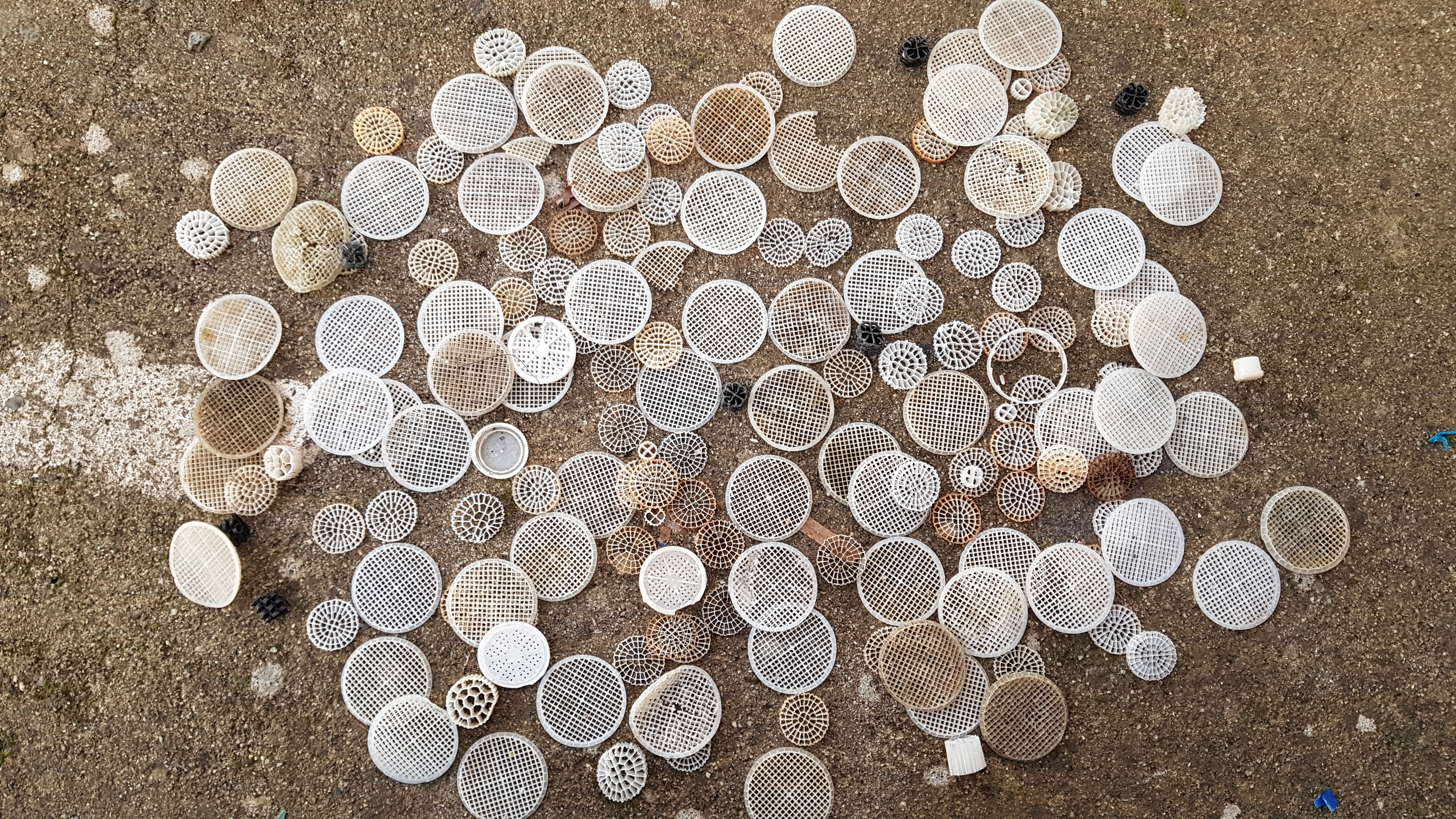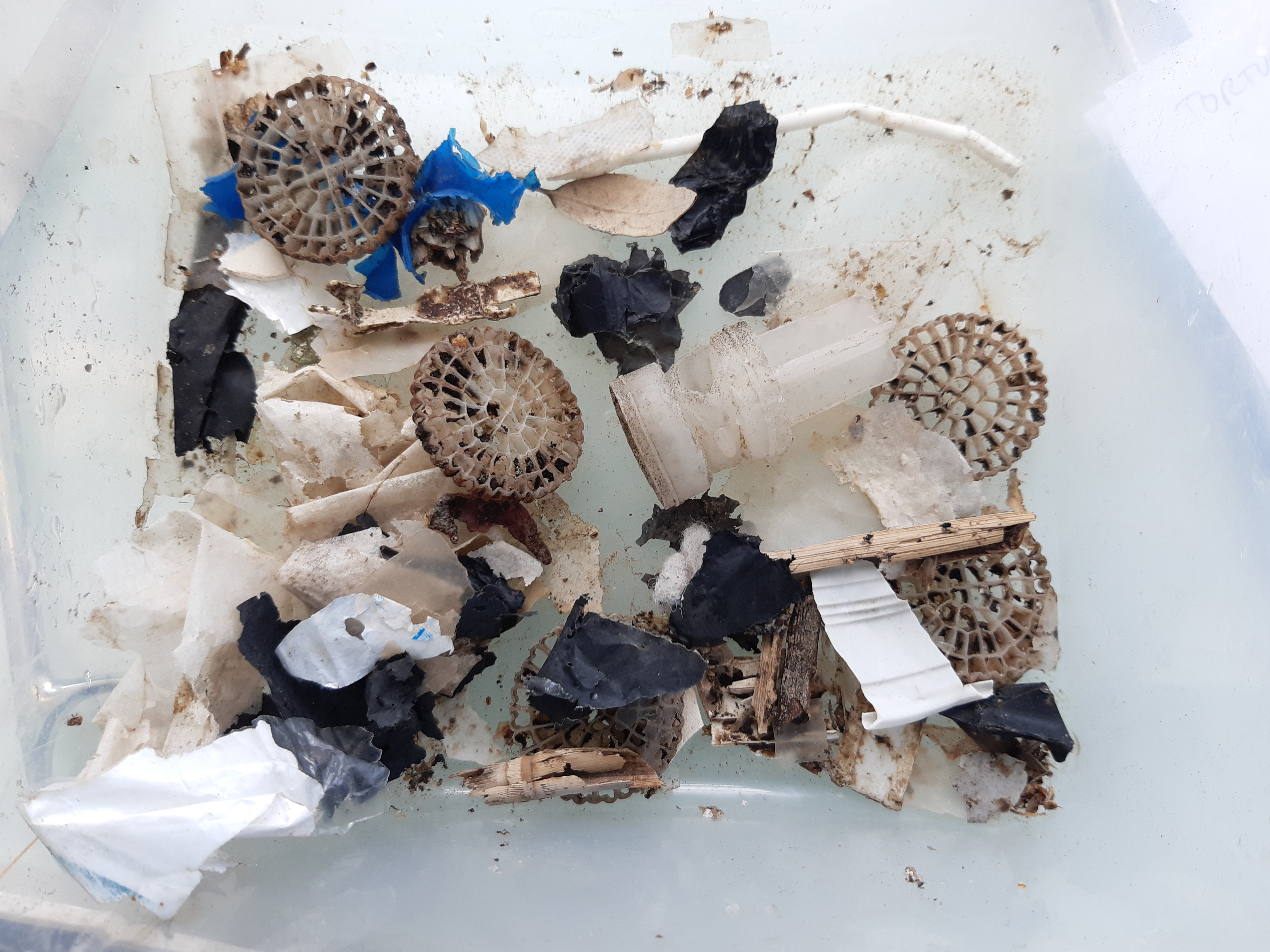2. PREAMBLE
These guidelines aim to provide a series of good practices for the Nordic countries and guidance for all stakeholders, public or industrial, involved in the overall biocarrier life cycle: from permitting authorities to the designers and operators of wastewater systems. Implementation of these proposals should help reduce the risk of unintentional leakage of biocarriers into marine and riverine environments due to wastewater treatment plant malfunction.
Biocarriers – An additional contribution to plastic pollution
The accumulation of plastic in the ocean and on shorelines has become a global problem. Every year, an estimated 8–12 million tons of plastic waste enters the ocean. From surface waters to deep marine sediments, plastic is everywhere, threatening marine and coastal ecosystems. Fifteen years ago, a new form of plastic pollutants was observed along the North Atlantic coast. These were identified as the biocarriers used to improve the efficiency of biological wastewater treatment. Due to unintentional leakage from various types of sewage treatment processes, biocarriers end up in the aquatic environment and on the coast, where they contribute to plastic pollution.

Figure 1 Biocarriers found on a beach in Corsica, France, 2018 ©MareVivu
What are biocarriers?
Biocarriers are plastic media used in WasteWater Treatment Plants (WWTPs) in the secondary treatment (biological) phase. During this phase, bacteria break down organic and nitrogen compounds as well as phosphorus.
Lustig, G., 2012, Moving bed biofilm reactors (MBBR) I Sverige, Svenskt Vatten
Depending on treatment requirements (nature and volume of the effluent, receiving waters), different technologies using biocarriers can be implemented. Some of the most commonly used are:
- Moving Bed Biofilm Reactor (MBBR)
- Integrated Fixed Film Activated Sludge (IFAS)
Since the late 1990s, multiple techniques using biocarriers have been developed to achieve compliance of wastewater treatment discharges in accordance with the European Urban Wastewater Treatment Directive (UWWTD) requirements. Biocarriers can be either fixed or fluidised (i.e., set in motion in the water column) and composed of different materials. These can be natural-origin minerals such as clay balls and volcanic rocks or synthetic supports made of plastic. In the event of a leak, the main environmental concern evidently relates to plastic media.
The three main categories of plastic supports used in fluidised processes are the following:
- Biocarriers. Usually, small 1 to 5 cm cylinders, but can also be in flat chip form. They are made of high-density polyethylene (HDPE) or polyethylene (PE). They are principally used in Moving Bed Biofilm Reactor (MBBR) -type processes.
- Biobeads. Irregular 3–5mm beads constructed from polyethylene PE and heterogeneous recycled PE (rPE), which are potentially non-compliant with current hazardous plastic waste regulations.Turner, A., Wallerstein, C., Arnold, R., 2019, Identification, origin and characteristics of bio-bead microplastics from beaches in western Europe, Science of The Total Environment, Volume 664, pp. 938-947.
- Polystyrene beads. Spherical and regular 3–5mm beads
Problem statement
A number of WWTPs using the Moving Bed Biofilm Reactor (MBBR) process experience malfunctions and thus may leak plastic biocarriers into the environment.
Since the end of the 2010s, massive releases of biocarriers (from several thousand to several million pieces) into aquatic environments have been observed in Europe
Bautista Barrera, S. , 2021, Att stänga av kranen för marint skräp: en rapport om fyra föremål, Master's thesis at the University of Gothenburg.
Bencivengo, P., Barreau, C., Bailly, C., Verdet, F., 2018, Wastewater filter media and pollution of aquatic environments.
Tunstad, A., 2021, The biocarrier escape routes, Identifying leaks through a Product Chain Organisation study, MSc thesis in Industrial Ecology, University of Chalmers
Other diffuse and chronic cases of leakage into the environment have also been observed, but knowledge gaps concerning the WWTP operators in general makes identifying the sources of these releases difficult.
In most cases, biocarriers reaching the aquatic environment are not recovered and thus contribute to global plastic pollution. They are washed up on shorelines or are ingested by marine animals (turtles, birds, etc.), thus contributing to the degradation of ecosystems.

Figure 2 Stomach contents of a Mediterranean sea turtle,2021 © G. Darmon & D. Gambaiani
The physical properties of biocarriers, particularly their density close to that of water, make them highly mobile pollutants with the capacity for rapid dispersion in the aquatic environment and all the more difficult to contain.
Solutions available
Reducing risks at the source remains the most efficient solution for addressing plastic pollution. The guidelines follow the biocarrier’s life cycle, from WWTP design to the final usage or disposal of biocarriers. There is a broad scope of action to resolve the issue of biocarrier pollution.
Interviews of stakeholders involved in different stages of the biocarrier life cycle identified risk-mitigating measures, either already implemented or requiring implementation from scratch. These measures vary from regulatory oversight to technological upgrades to improvements in crisis management plans. To reach the objective of reduced biocarrier leakage, the mobilization of all stakeholders is essential to ensure that this type of pollution is considered in relation to its environmental impact. The implementation of preventive measures and the securing of wastewater treatment systems also appeared as key steps to effectively reducing the risk of leakage.
The recommendations in this document focus on biocarriers. However, it would be relevant to extend their application to the 3 types of plastic supports mentioned above, given the similarity of their physical properties and use.
International Cooperation
The report will contribute to policy development between the Nordic countries and to identify and follow up on possible areas for further cooperation and collaboration.
It will also advance the United Nations Environment Assembly (UNEA) resolution 3/7, which stresses the long-term ambition of eliminating the discharge of plastic litter and microplastics into the oceans and to UN Sustainable Development Goals 14.1.
Furthermore, this document represents a contribution to the work of the Convention for the Protection of the Marine Environment of the North-East Atlantic (more commonly known as the OSPAR Convention) in relation to its objective on marine litter, namely "to reduce substantially the amount of marine litter in the OSPAR maritime area to levels where its properties and quantities do not cause harm to the marine environment".
Even if these guidelines are initially addressed to Nordic Countries, it should be noted that although each WWTP has its own environmental specificities the core of the issue remains the same wherever its location. Therefore, these recommendations apply to a wide range of facilities.